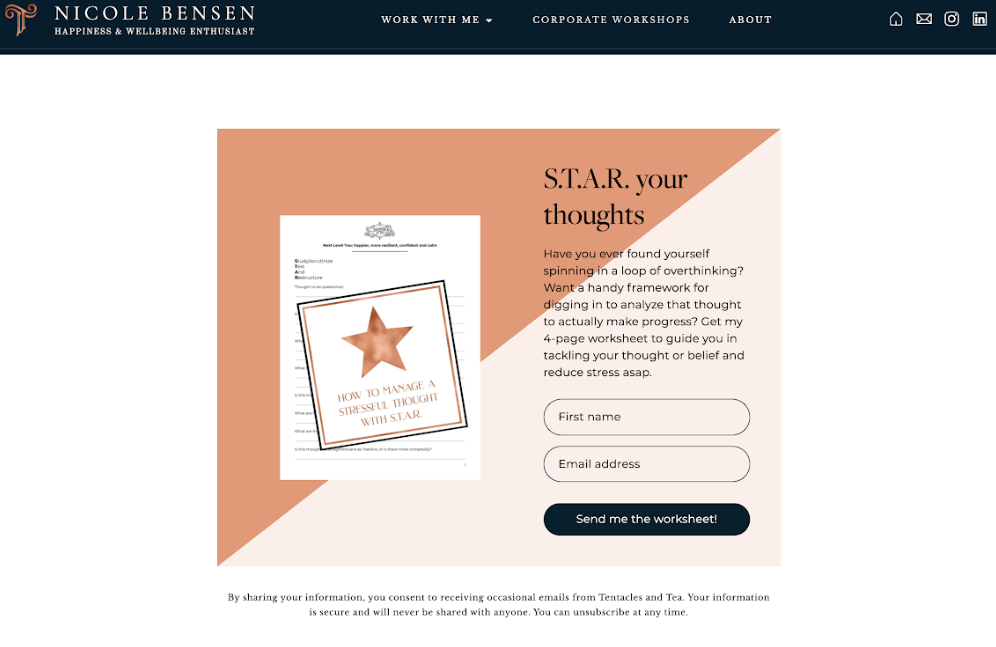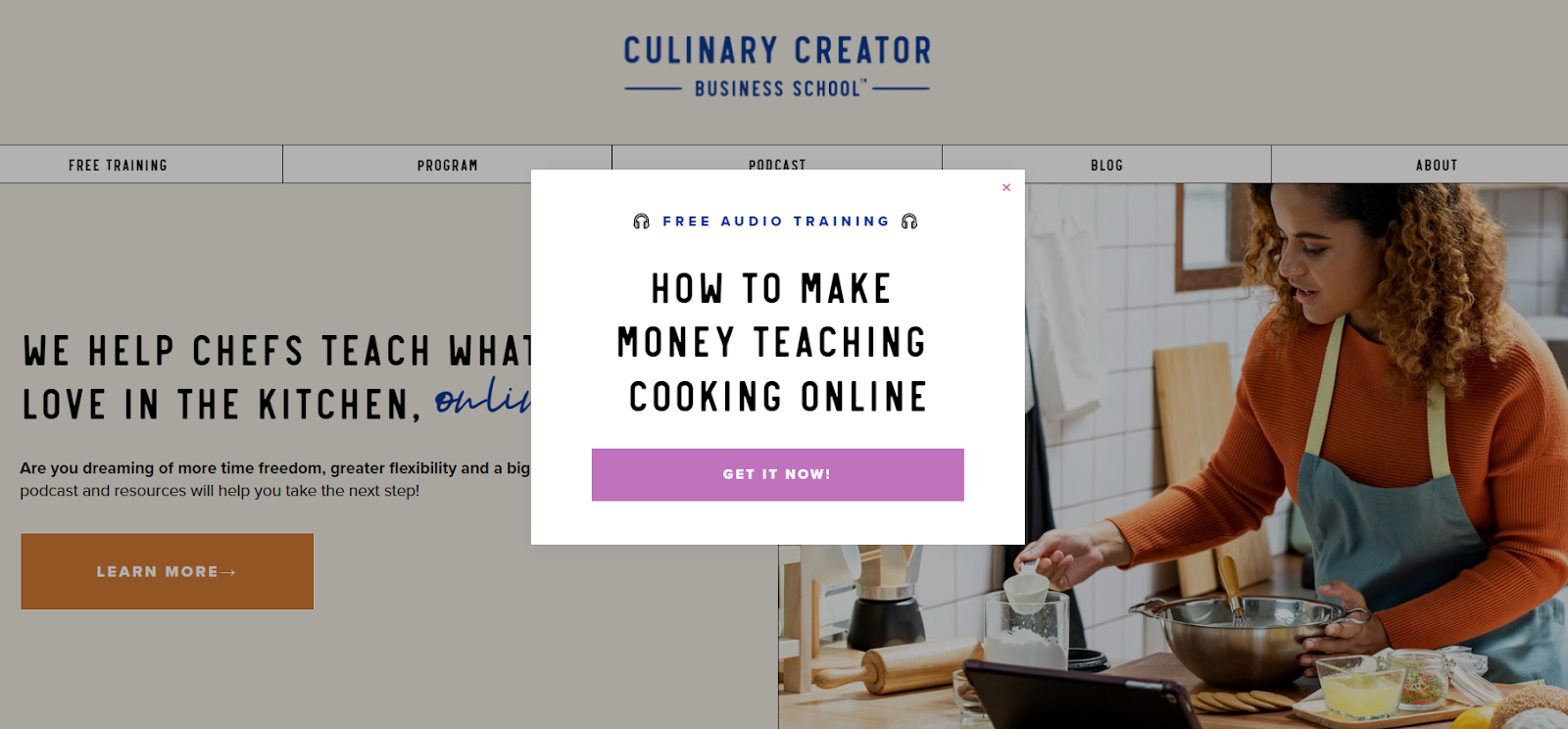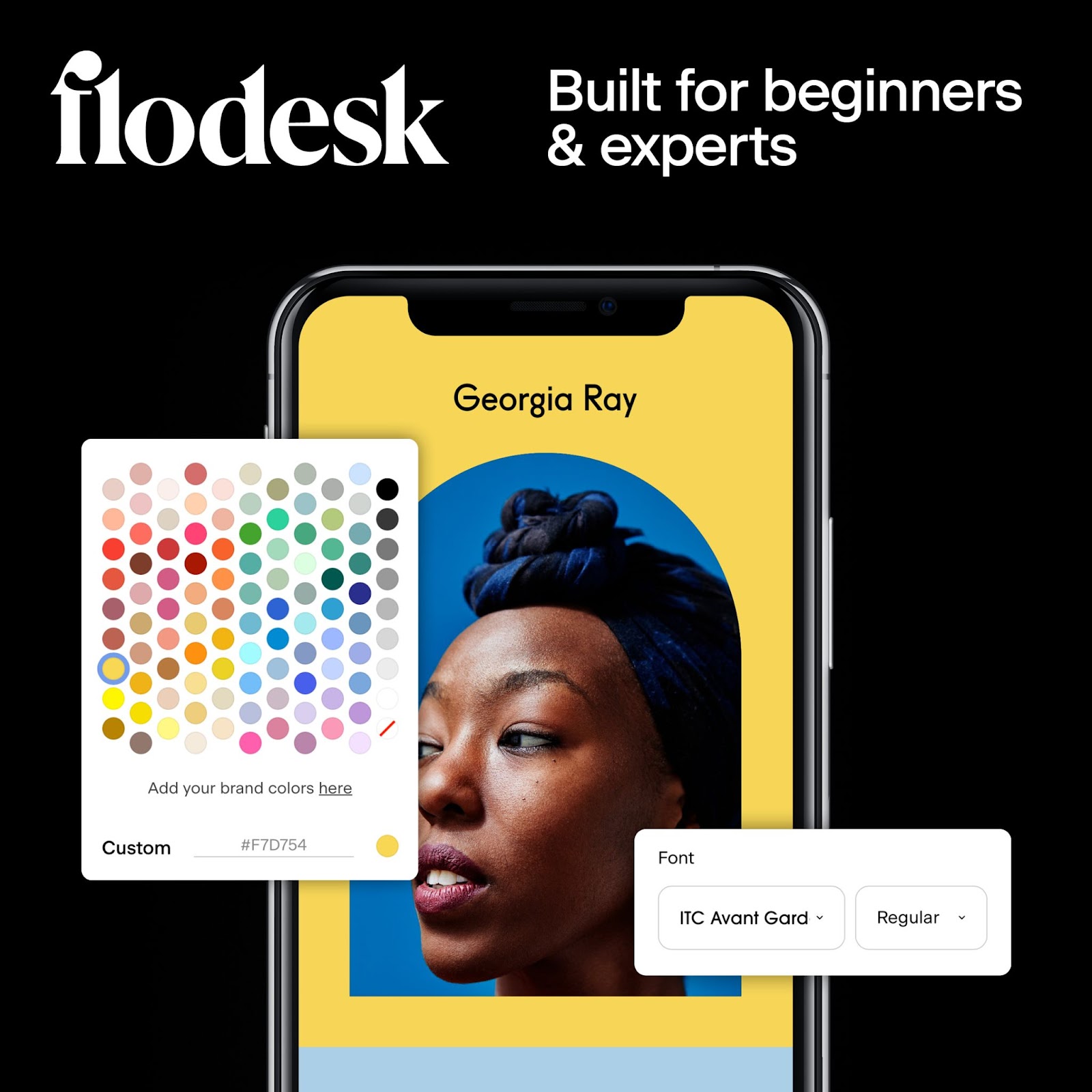How to create a digital product that people really want
Table of Contents Jump to:
Jump to:
Table of contents
TL; DR Check out our best practices and a step-by-step strategy to create a digital product that suits your brand and meets your audience’s needs.
The only thing more thrilling than catching lightning is using it profitably. If you’re reading this, that lightning has likely already struck. You’re excited about creating a digital product that will change your life. We’re excited for you!
You’ve already imagined your future: a successful product launch, thousands—if not millions—of buyers clamoring for their copy, and that bank account growing more and more each week.
That future is more than a rose-colored dream. It is possible.
But before you can run, you must walk. In this case, that means taking that first step and creating your digital product. It may sound simple, but you’d be amazed how many ambitious hopefuls never make it past this hurdle.
That won’t be you though. Not with this article as your guide. Because today, we’re here to help you turn your dreams into reality in this first part of our blog series on successfully creating and selling digital products.
Get a sales and checkout page to sell your products with ease
Monetize your content and accept payments with beautiful checkout flows. No platform fees.
Why create digital products?
Digital products, or digital downloads, are hardly new. But since the COVID pandemic, the industry has evolved from merely thriving to being worth multi-millions.
The days of skeptical business owners thinking there’s hardly any money in selling digital products are long gone. In their place, solopreneurs have sprung up almost overnight, turning their skills and knowledge into profitable products and announcing their success on social media.
These creators are monetizing their expertise. They’re easily converting their skills and hobbies into digital products with a long list of benefits, including:
- Cost efficiency: Plenty of people create digital products and then sell them on inexpensive ecommerce websites or online marketplaces. And since you never have to restock, you can eliminate most operational costs like storage and shipping.
- Better margins: The profits for digital products are typically considerably higher than those of physical products. With low costs and high profits, it’s possible to make a lot of money in a short timeframe.
- High scalability: With nothing more than a computer and a strong wifi connection, you can sell your product to the entire world—all it takes is a little elbow grease and personal commitment.
- Supplementary income: Many successful sellers use their digital products to complement their services (a personal development coach might also sell a digital course for those who can’t afford it or aren’t ready to commit to a one-on-one service).
- Instant delivery: We all love instant gratification, and because digital products are usually available the second they’re purchased, you’ll be tapping into one of the core purchasing motives that drive modern consumers.
- Easily automated: Once you’ve set up your online store, payment, and product delivery methods, your money-making machine can run mostly on its own.
- Less stress: With zero risk of shipping issues or product defects, selling digital products is far smoother and hassle-free than selling physical products.
- Better work-life balance: It’s a bold statement, but digital products truly are the easiest and most effective way to create a passive income strong enough to quit your 9-5.
6 steps to creating a digital product
We’ve pulled together these steps to show you how to create a digital product to sell online, no matter where you are in the creative process. If you already have the golden goose idea you want to run with, jump to step two.
- Brainstorm ideas
- Validate your ideas
- Learn what your competitors are doing
- Market yourself
- Create your digital product
- Create your online store
1. Brainstorm ideas for profitable digital products
Creativity is a process; don’t stall yourself waiting for inspiration or motivation to hit.
One of the best ways to find the right product idea is to use “green-light thinking.” This method involves writing down every potential product you can think of, whether they’re great or lousy.
Your ideas don’t have to be perfect or even fully formed—you just need to write them down. The world’s greatest thinkers and creators all do this, from modern moguls like Richard Branson to iconic figures like Thomas Edison.
Some great ways to stimulate your thinking include:
- Looking at the products others have already created and are selling successfully. You might find a way to create and sell an enhanced version of their product.
- Thinking about something you could talk all day about. Is there a product you can create centered around that?
- What about the frustrations you currently have? Can you develop solutions that could become products?
- Reviewing your skills. What are you good at? Jules Acree is a great example of someone who’s successfully monetized her mindfulness skills to create products to help you achieve your goals and simplify your life.
You’ll also want to consider what type of digital product you might create. Some of the best-selling digital products include:
- Online courses (the e-learning industry is especially profitable)
- Ebooks and audiobooks
- Online communities (similar to courses, but less of a static product)
- Licensed stock files for download (stock photos and videos, sound effects, and more)
- Software products
- Templates for emails, landing pages, or other creative uses
- Downloadable prints
- Bespoke graphic design services
- Print-on-demand services
Try to consider every angle without being overly judgmental of your ideas. And don’t discard any idea until you’ve settled on the perfect one for you—looking at the list you’ve created may help generate even more ideas.
2. Validate your ideas
Now that you have your digital product idea nailed down, it’s time to figure out how viable it is.
One of the best ways to do this is through customer research, but there are a few alternative methods you can use:
- Social media research: You can learn a lot about your potential customers by finding them on social media (including forums like Reddit). Pay attention to what they post and strike up conversations with them; this will yield crucial information about who you’ll be selling to and how to sell to them.
- Keyword research: Search engine optimization (SEO) might not be top of your mind right now, but it’s an excellent way to get a feel for what people are interested in, whether it’s what they want help with or what they’re interested in buying.
- Trend research: Hot topics can generate mountains of attention, but if you want long-term success and a thriving passive income stream, you shouldn’t base your digital product around them. Use trending topics to give your product an attention lift.
- Content research: You can gain insights into what your ideal customer is interested in through the content they’re consuming (blogs, videos, or social posts).
- Ask around: There’s no quicker way to find out what your ideal customer wants than to simply ask them.
Doing a mix of all these types of research will serve you all the better. Don’t fool yourself into thinking you can skip this step either; there’s a reason market research is a billion-dollar industry.
Happiness and wellbeing enthusiast Nicole Bensen wouldn’t be nearly as successful without having first validated her product’s consumer market. It’s only through this kind of deep research that you’ll determine how viable your product idea is. Refine it to meet consumer needs precisely and use language that speaks to your ideal customer.
3. See what your competitors are doing
Competitor research should be part of your general market research. Once you’re certain your idea is one people will want to buy (because it solves a problem or helps them achieve something), you need to know who you’re competing against.
The benefits of this are threefold. First, you’ll save yourself from reinventing the wheel by seeing what’s already working.
Second, you’ll discover your unique selling proposition (USP).
And third, you can see what others have done right and wrong by checking out product reviews. Both good and bad reviews are invaluable because they highlight what people like (and what’s worth emulating) and what they don’t (so you can avoid it).
The chances of your idea being truly and completely original are slim. Thankfully, it doesn’t need to be. Google was not the first search engine by a long shot, but it dominated the competition by simply offering a better service. And you can too.
Use the competition to figure out your angle:
- Will your product be 10% better than the other available options?
- Will you cater to a niche that no one else is targeting (like an online course designed exclusively for small business owners focused on cake decorating)?
Pro tip: Checking out competitor pricing can also help you figure out how to price digital downloads!
4. Market yourself
A common mistake people make is working exclusively on creating their digital product instead of marketing it too.
Take it from my first-hand experience—you’re setting yourself up for failure if you take that approach. Nailing down a marketing strategy before you even create a digital product is important for one simple reason: documentation.
There are many ways to market yourself—emails, social media, SEO, or ad campaigns—but one of the easiest ways to kick-start your product marketing is to document the process of creating it.
Content marketing is one of the most effective digital marketing tactics around if you do it right. And the right way to do it is to make it about your customers. Bring value to your audience in the form of entertainment, information, education, or inspiration.
Documenting your creative process does exactly that. Whether you document in video format or in writing, you can share this content on social media, YouTube, or on your blog. This will generate attention and supporters for your digital product, all while doing what you were doing already—creating a downloadable product to sell.
It can also feed perfectly into getting you started with email marketing like Little Whimsey is doing with this list-building landing page that makes use of gated content:
Since email marketing earns a higher average ROI than any other marketing method, you should prioritize it. Check out our post on how to build an email list for more pointers.
Email and social media marketing are by no means the only ways to market your digital product, but they’re both well worth your effort early on because they can build momentum in time for launch day.
A teaser email campaign can be an effective way to do just that. You can also check out our list of newsletter examples for more inspiration on how you can nurture your subscribers until it’s time to sell them.
5. Create your digital product
How and where you create your digital product depends entirely on the type of product, but there are a few tools that can help you get started.
- Microsoft Word (or Google Docs, if you want a free version) is all you need on a basic level to create any kind of ebook or similar product. There are also plenty of free tools like Kindle Create to help format your ebook for e-readers.
- Audacity is a free open-source audio recorder, mixer, and editor that you can use to create any kind of downloadable music or sound-byte.
- Photoshop is the go-to for pro designers. Or, you could use free alternatives like Canva or GIMP to create assets and designs for your digital product.
- Fontstruct is a free online tool for building your own fonts.
- Kajabi gives you everything you need to create online courses, communities, coaching, and podcasts.
- VN is a free and easy-to-use video editing app for Android and Apple phones.
- Lightroom is a free and easy-to-use photo editing app for Android and Apple phones.
Of course, this list is far from exhaustive. But hopefully, it’s given you some direction on how to create your digital product.
6. Create your online store
Search Google for online stores or ecommerce and you might quickly feel overwhelmed by the limitless choices. Ultimately, that decision boils down to one simple question: do you want to sell digital products from your online store or an online marketplace like Amazon or Etsy?
Tapping into an existing marketplace may seem like the best option, and it’s certainly the easiest. But if you’re aiming for long-term success, we strongly suggest you create your own online store, with your own branded product page design.
Online ecommerce shops like Shopify are relatively easy to set up, and you have some flexibility with branding, but not enough to create that truly seamless ecommerce experience. We suggest bringing people to your own store though where you can create a branded experience your customers will love.
You may need to do a bit of marketing to drive traffic to your site, but we think it’s worth it to have a shop where you don’t have to pay a large percentage of your fees to the platform and have room to grow.
That’s why Flodesk content marketing manager Sheena used Flodesk Checkout to set up her own shop to sell her ebook:
Of course, if you’re not put off by the fees of an online marketplace, or if you feel the competition you’ll be facing is a suitable trade-off for the potential traffic from their existing users, here are a few marketplaces worth considering:
- Amazon KDP allows you to easily publish an ebook on the Amazon marketplace.
- Gumroad is an online marketplace where you can sell anything from ebooks to digital paint brushes, blogs, templates, videos, license keys, and more.
- Etsy is another marketplace where you can sell just about anything fairly easily. It’s also a famously friendly place where the risk of cutthroat competitors undercutting you is low.
- Kajabi is an ideal marketplace for selling online courses and digital products in the e-learning niche.
Best practices for creating digital products
1. Create what you know
“Start with what you know” is a famous saying for a good reason, and it applies to creating digital products as well as any other field.
You can take this advice from a few angles. You might create a digital product that uses your knowledge or talents directly or one that teaches people how to do what you do.
Cynthia Samanian’s Culinary Creator Business School is a great example of how you can teach what you know and expand that into both physical and digital products.
Online courses are perhaps the most lucrative digital product you can create. They have been growing exponentially in popularity since the 2020 pandemic, and that won’t be slowing down any time soon. Experts predict the e-learning industry will be worth a whopping $374.3 billion in 2026, so if you can tap into that with your existing skills and unique personality, you’ll be onto a winner.
2. Learn what your audience needs
We touched on this earlier under the “validate your ideas” section, but it’s so vital that it deserves a deeper discussion.
To successfully sell digital products (or anything, really), you need to identify:
- Who your target customer is
- What they’re struggling with
- What they want
- What they’re afraid of
- What language they use
- Why the existing solutions aren’t working for them
- How suitable your product will be for them
- How your product will make their lives better
If you skip this step, you may struggle to successfully sell your digital product.
You should aim to sell to an audience of one, not an audience of “everyone.” This doesn’t mean you’ll only get one sale, of course. It means that if you tailor your product marketing to the exact people you want to sell to, they’ll feel a deep, personal connection to your product—the kind that’s guaranteed to increase your sales.
When you have a clear understanding of this crucial customer information as it relates to your digital product, you’re ready to move ahead with your idea.
But that doesn’t mean there’s still no work to be done before you start creating anything.
3. Stay organized
Benjamin Franklin famously said, “For every minute spent organizing, an hour is earned.”
To some, organizing is a chore; to others, it’s a waste of time. But if you want to successfully create and sell digital products, you’ll need to stay organized so that no loose ends escape you.
Just as it takes far longer to tidy a room that resembles a junkyard than it does to maintain a reasonably neat one, the same goes with staying organized. Make this a priority from day one and you’ll have a much easier time.
Here are a few pointers that will help:
- Use a notes app like Google Keep or Evernote to record your thoughts and ideas—you’ll find this especially crucial when marketing your digital product as it will give you an endless supply of content ideas and angles.
- Set up email folders to help you track down crucial emails when you need them. This depends on your specific needs, but some options include folders for individual suppliers, clients and/or customers, bills, invoices, and taxes or inspiration.
- Always take the time to store things away in the right place, whether it’s physical files or digital ones. If you can’t do this immediately, make time for it at the end of the day; don’t let things pile up wherever they land.
- Use an app like Notion to collect everything relating to your digital product in one place.
- Regularly revise how you organize things. The organizational method you think will be most useful right now will likely need refining as you forge on with creating your digital product. Needs change as your business grows, and you should be ready to adapt.
4. Start marketing ASAP
As we’ve already mentioned, you need to make marketing as high a priority as creating your digital product. Your product deserves a strong launch, and the only way that will happen is if you generate significant hype around what you’re doing.
Do not do yourself or your product the disservice of leaving marketing until your product has ready to hit the digital shelves. Here’s a quick overview of three key marketing tactics to prioritize:
- Share the process of creating your digital product on social media.
- Start building an email list. Offering freebies in exchange for email addresses works wonders, or you could create a newsletter to keep people engaged.
- Write a blog covering topics related to your product. If you can, post on this weekly and back it up with some SEO research to start attracting search engine traffic to your website.
5. Keep moving forward
Get rid of the idea of perfection. If you wait for the perfect timing or the perfect idea, you’ll never get started.
Instead, do the work, find the idea you’re most excited about, and then get started. Document the creative process, market while you create, do the best you can, and get your digital product out there.
It won’t be perfect. You’ll learn what people like and don’t like through comments and reviews; use that feedback to improve and create the next iteration of your product.
6. Don’t give up
Perhaps it sounds cliché, but this is not going to be an overnight win. It could be months or even years before you start seeing the kind of results you want.
We all hope that we’ll release our product to deafening applause and viral fame, but you can’t plan for that. You’ll need to develop a thick skin and unflappable determination to stick with this and to keep learning and improving every day.
Get a sales and checkout page to sell your products with ease
Monetize your content and accept payments with beautiful checkout flows. No platform fees.
Next step: Selling your product
Creating a digital product is the perfect side hustle. It can boost your income, support your other job, bring in much-needed cash and even take you to the lofty heights of millionaire city.
Hopefully, you’ve gained some insights and inspiration from this post that will help get you there, but we’re far from finished on this exciting topic. Join us in the next post where we’ll dive deep into how to sell digital products online.








